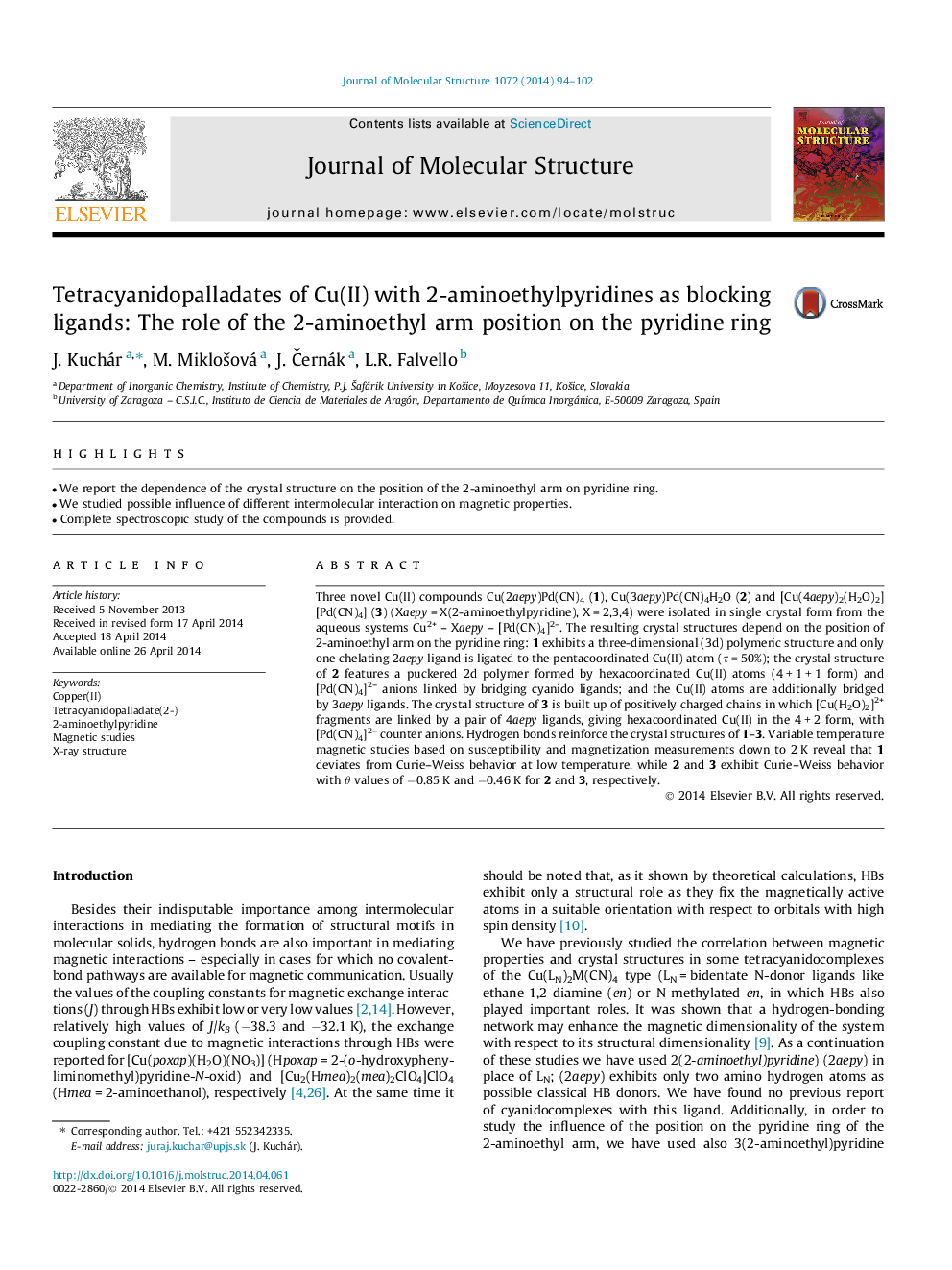| Article ID | Journal | Published Year | Pages | File Type |
|---|---|---|---|---|
| 1405029 | Journal of Molecular Structure | 2014 | 9 Pages |
•We report the dependence of the crystal structure on the position of the 2-aminoethyl arm on pyridine ring.•We studied possible influence of different intermolecular interaction on magnetic properties.•Complete spectroscopic study of the compounds is provided.
Three novel Cu(II) compounds Cu(2aepy)Pd(CN)4 (1), Cu(3aepy)Pd(CN)4H2O (2) and [Cu(4aepy)2(H2O)2][Pd(CN)4] (3) (Xaepy = X(2-aminoethylpyridine), X = 2,3,4) were isolated in single crystal form from the aqueous systems Cu2+ – Xaepy – [Pd(CN)4]2–. The resulting crystal structures depend on the position of 2-aminoethyl arm on the pyridine ring: 1 exhibits a three-dimensional (3d) polymeric structure and only one chelating 2aepy ligand is ligated to the pentacoordinated Cu(II) atom (τ = 50%); the crystal structure of 2 features a puckered 2d polymer formed by hexacoordinated Cu(II) atoms (4 + 1 + 1 form) and [Pd(CN)4]2– anions linked by bridging cyanido ligands; and the Cu(II) atoms are additionally bridged by 3aepy ligands. The crystal structure of 3 is built up of positively charged chains in which [Cu(H2O)2]2+ fragments are linked by a pair of 4aepy ligands, giving hexacoordinated Cu(II) in the 4 + 2 form, with [Pd(CN)4]2– counter anions. Hydrogen bonds reinforce the crystal structures of 1–3. Variable temperature magnetic studies based on susceptibility and magnetization measurements down to 2 K reveal that 1 deviates from Curie–Weiss behavior at low temperature, while 2 and 3 exhibit Curie–Weiss behavior with θ values of −0.85 K and −0.46 K for 2 and 3, respectively.
